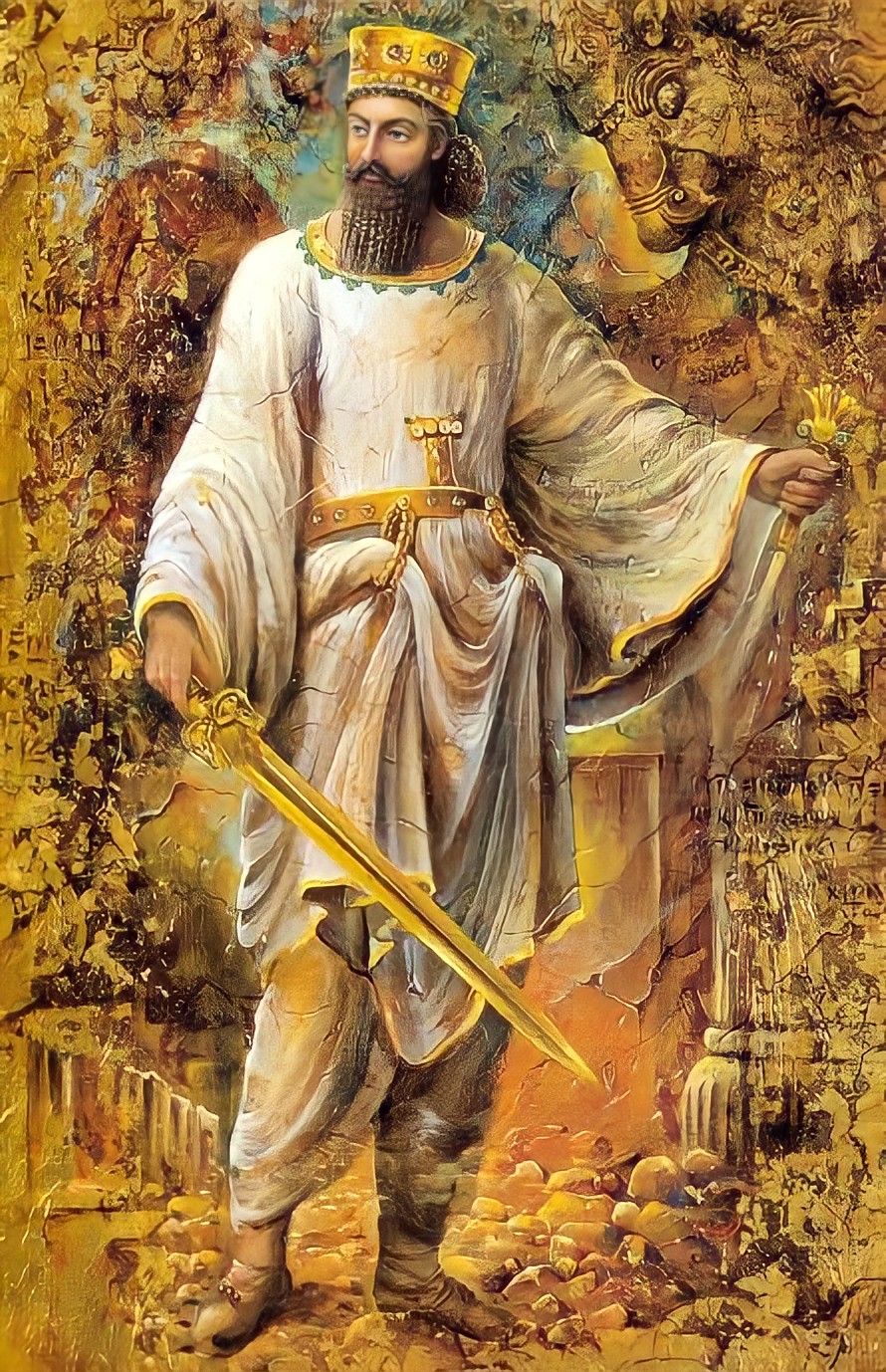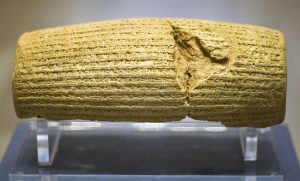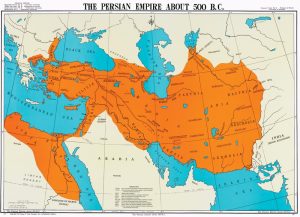Cyrus The Great

Cyrus II the Great (r. 559-530 B.C.), the founder of the Achaemenid Persian Empire, set the tone for its imperial grand strategy. Tolerance, law, and order were how the Persians were to conquer and rule the known world. Disruption of order by rebellions and lawlessness were challenges met by the Achaemenid kings through a well-trained, organized army and a centralized bureaucracy.
Cyrus ascended the throne of Persia in 559 B.C., and as his predecessors, recognized the overlord ship of the neighboring Iranian Medes. During the first decade of his reign, Cyrus was interested in consolidating his authority over the Persian confederation and the sizeable Median Empire.
In 550 B.C., with support from many in the Median army and nobility, he defeated his unpopular grandfather the Median King Astyages, and captured their capital Ecbatana. During the second decade of his reign, Cyrus consolidated all of Iran, as well as eastern lands such as Marv and Samarkand. In 545, the fall of the powerful and wealthy Lydia to Cyrus sent a shockwave across the ancient world. Cyrus then turned his attention to Babylon.
On October 10, 539, Cyrus attacked and defeated the Babylonian army stationed at Opis on the Tigris. Susa fell next. Sippar was taken without a fight. Babylon was captured on October 12th, and ten days later Cyrus entered the city.
According to Cyrus’s declaration known as the Cyrus Cylinder, the world’s first known bill of human civil rights, the people held in captivity by Babylonian kings were set free to return to their native lands. Under this decree, the Jews also returned to their homeland and rebuilt their temple. Unfortunately, soon thereafter his beloved wife Cassandane died, and Cyrus left for Persia to bury his queen.

Cyrus the Great is considered one of the best conquerors and most admired leaders of all time. He is the subject of many historical and political studies. His life was studied and emulated by other “giants” in histories such as Alexander and Caesar.

His partially fictional biography Cyropaedia by Xenophon was a mandatory read for certain degrees in European and early American universities. Many of the Founding Fathers of America each had at least one copy of this biography.

Tomb of Cyrus the Great at Pasargadae
The Tomb of Cyrus is the final resting place of Cyrus the Great, the founder of the ancient Achaemenid Empire. The mausoleum is located in Pasargadae, an archaeological site in the Fars Province of Iran. According to the Father of Modern Political Science, Machiavelli, Cyrus was a notable prince because he became “great” based on personal ability, not fortune. He created an empire with difficulty but kept it with ease based on his character and leadership. In his book Power Ambition Glory, internationally-acclaimed American publisher and businessman Steve Forbes begin his parallels between great ancient leadership and today’s global lessons with Cyrus.
For Iranians, Cyrus is a byproduct of their ancient culture, heritage, and upbringing. They are proud to have presented such a man to world history. Cyrus the Great is the embodiment of Iranian national identity, and his immortality ensures Iran’s future freedom, greatness, and contribution to the advancement of human civilization.
“Passerby, I am Cyrus, who gave the Persians an empire and was king of Asia. Grudge me not therefore this monument.”
(The inscription on Cyrus’s tomb by Strabo, 1st c. B.C.)
Royal House Achaemenid
Coronation
Anshan, Persis, Iran
Name: Cyrus II of Persia
Also Known As: Cyrus the Great
Title: King of Persia, King of Anshan, King of Media, King of Babylon, King of Sumer and Akkad, King of the Four Corners of the World
Predecessor
Cambyses I
Successor
Cambyses II
Spouse
Cassandane of Persia
Issue
Cambyses II
Bardiya
Artystone
Atossa
Father Cambyses I
Mother Mandane of Media
Born c. 600 or 576 BCE
Birthplace Anshan, Persia (Iran)
Died December, 530 BC
Place of death Along the Syr Darya
Buried Pasargadae
Reign c. 559–530 BCE (30 years)



